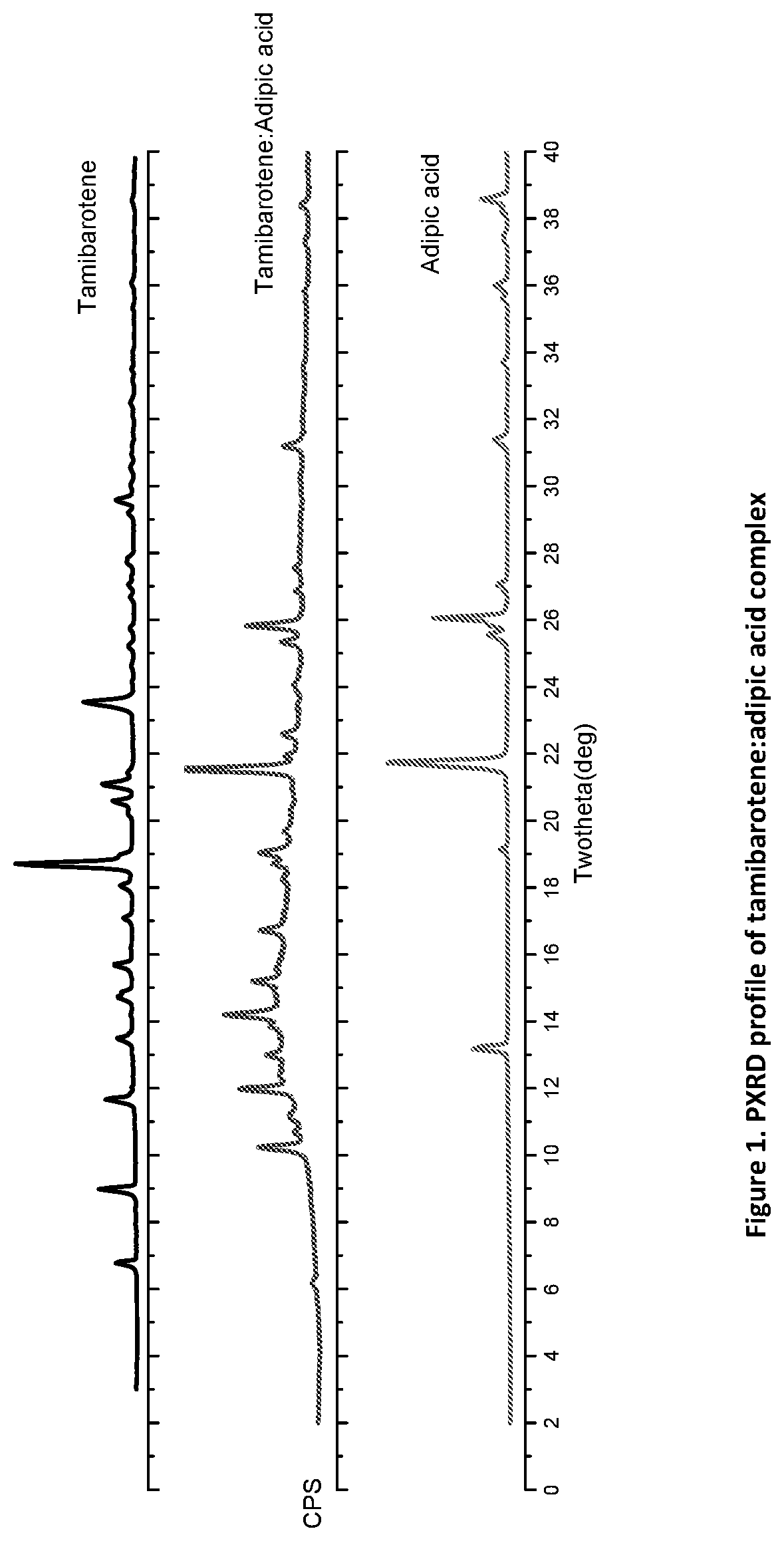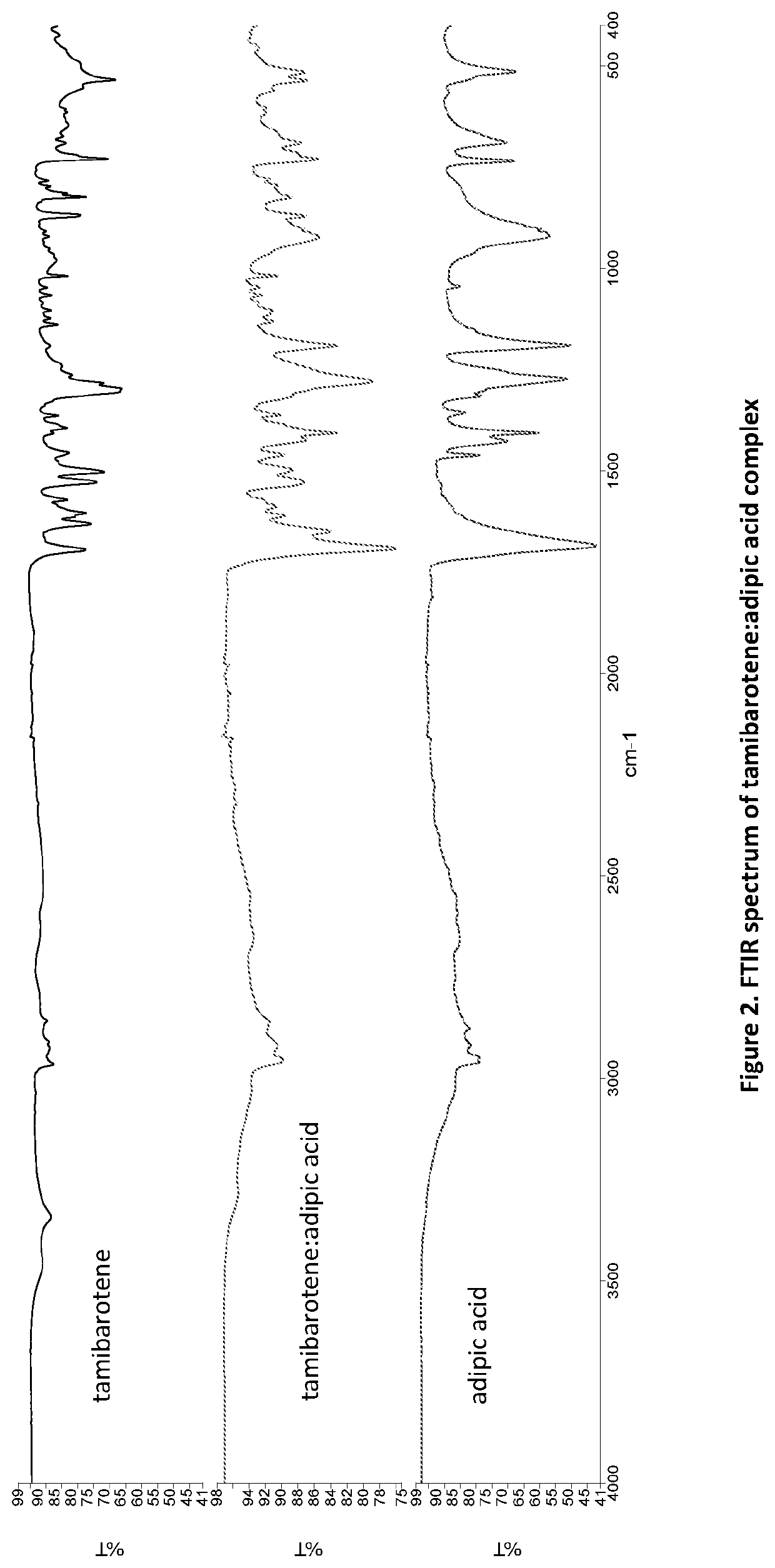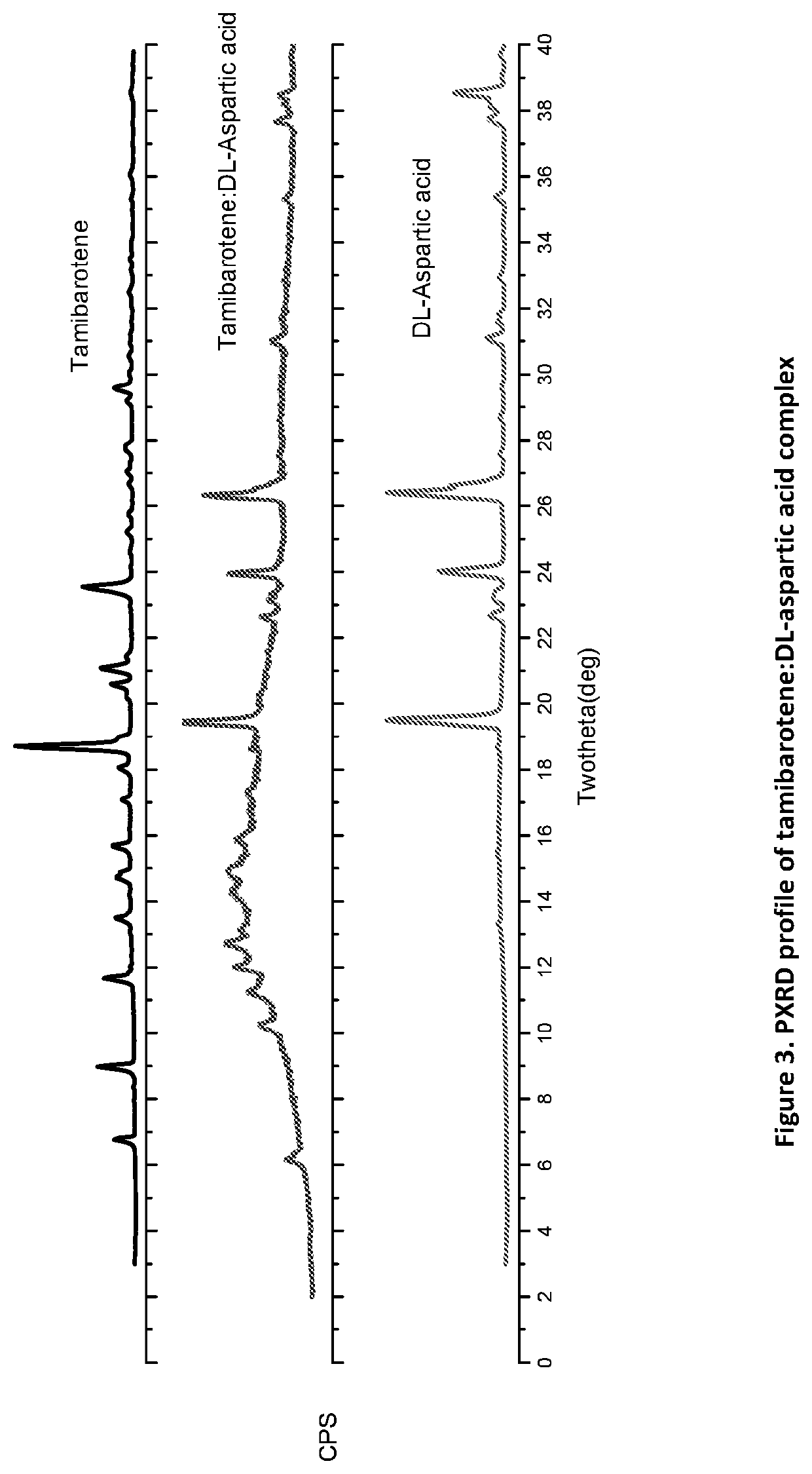Novel crystalline forms of tamibarotene for treatment of cancer
a technology of tamibarotene and cancer, which is applied in the field of new crystalline forms of tamibarotene, can solve the problems of ineffective treatment of cancer, inability to completely eradicate tumors in traditional chemotherapies, and inability to effectively treat cancers
- Summary
- Abstract
- Description
- Claims
- Application Information
AI Technical Summary
Benefits of technology
Problems solved by technology
Method used
Image
Examples
example 1
on of Tamibarotene:Adipic Acid Complex
[0125]50 mg of recrystallized tamibarotene in acetonitrile and 20 mg of adipic acid (1:1 molar ratio) was stirred as a slurry in an open 20 mL glass vial with 1 mL of acetone. After 12-16 hours the stirring was stopped, and the mixture was dried at room temperature for another 12-16 hours. The solids gathered were dried and stored in a screw cap vials for subsequent analysis. The material was characterized by PXRD and FTIR corresponding to FIGS. 1 and 2, respectively.
example 2
on of Tamibarotene:DL-Aspartic Acid Complex
[0126]50 mg of recrystallized tamibarotene in acetonitrile and 16.5 mg of DL-aspartic acid (1:1 molar ratio) was stirred as a slurry in an open 20 mL glass vial with 1 mL of acetone. After 12-16 hours the stirring was stopped, and mixture was dried at room temperature for another 12-16 hours. Solids were dried and stored in a screw cap vials for subsequent analysis. All materials were characterized by PXRD and FTIR corresponding to FIGS. 3 and 4, respectively.
example 3
on of Tamibarotene:Acetylsalicylic Acid Complex
[0127]50 mg of recrystallized tamibarotene in acetonitrile and 26 mg of acetylsalicylic acid (1:1 molar ratio) was stirred as a slurry in an open 20 mL borosilicate glass scintillation vial with 1 mL of acetone. After 12-16 hours the stirring was stopped, and mixture was dried at room temperature for another 12-16 hours. The material was stored for subsequent analysis and characterized by PXRD and FTIR corresponding to FIGS. 5 and 6, respectively.
PUM
| Property | Measurement | Unit |
|---|---|---|
| 2θ | aaaaa | aaaaa |
| 2θ | aaaaa | aaaaa |
| 2θ | aaaaa | aaaaa |
Abstract
Description
Claims
Application Information
 Login to View More
Login to View More - R&D
- Intellectual Property
- Life Sciences
- Materials
- Tech Scout
- Unparalleled Data Quality
- Higher Quality Content
- 60% Fewer Hallucinations
Browse by: Latest US Patents, China's latest patents, Technical Efficacy Thesaurus, Application Domain, Technology Topic, Popular Technical Reports.
© 2025 PatSnap. All rights reserved.Legal|Privacy policy|Modern Slavery Act Transparency Statement|Sitemap|About US| Contact US: help@patsnap.com



